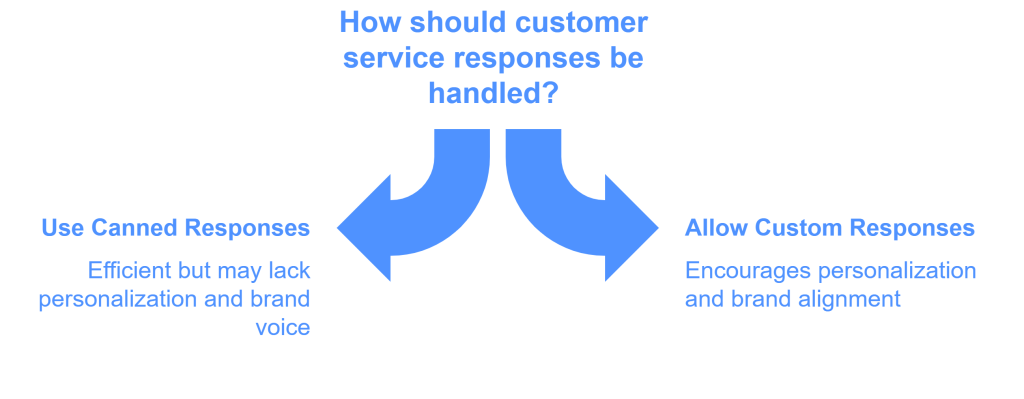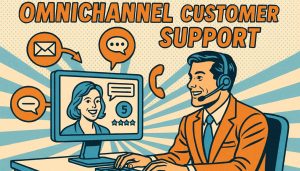Live chat is a great sales tool and a tremendous tactic to offer fantastic customer service. It’s more scalable than a call center because live chat systems typically permit the customer service agent to conduct several chats concurrently, dramatically improving the ability to service more customers per hour.
Except, of course, procedures actually damage the customer experience rather than enhance it.
At the moment, we’ll take a look at few situations where live chat can actually destroy the customer experience. We’ve also included preliminary guidelines for implementing effective live chat customer service.

Live Chat Scenarios
Make Sure the Customer Service Agent Reads the User’s Question or the Session Log
Personalization + adapted user experiences. A basic personalization standard is “in no way make your customers repeat themselves.” This issue occurs online, on the phone, and in live chat. It’s evidenced online by blank forms that should be prepopulated with already known information (such as user name, if the user’s already signed in).
On the phone, it happens when the agent asks for your telephone number or account number, even though you already provided it for the duration of the automated part of the phone call. In live chat, this occurs in two different places.
The majority of live chat systems, including LiveHelpNow pre-chat requirements, sometimes require you to enter your name and an initial question before the live chat commences. That way, the agent already knows what the question is and can start helping you right away. Here’s a snippet from a recent conversation we had via live chat with Comcast xfinity support agent:
You are now chatting with “Janice J.”
Janice J.: Welcome to the sales team! I’m Janice, your online Sales Representative. How may I assist you today?
John: Hello. I would like to cancel my high-speed internet and keep only the cable service.
Janice J.: I would have to transfer your chat to high-speed internet department, please hold.
John: Ok
You are being transferred to the high-speed internet department.
You are now chatting with “Sam G.”
Sam G.: Hello! Welcome to Comcast Xfinity Online Support. I am Sam, your online live Support Representative. How may I assist you?
In this example, I have been asked to explain my problem three times. I entered the problem into the system when I initiated the chat session. I repeated it to Janice. Then I was transferred to Sam, who asked me to repeat it again. Is the problem they didn’t read the conversation log before chatting with me? Getting a little aggravated now…
I think it’s simpler than that. Currently, the canned greeting message says:
Welcome to the sales team! I’m Janice, your online Sales Representative. How may I assist you today?
The use of canned greeting message actually changed the user workflow and made the whole conversation confusing actually time consuming.
If the greeting was different, the entire customer experience would’ve been different.
Here’s another version that works much better:
Welcome to the sales team! I’m Janice, your online Sales Representative.
Please allow a minute for me to review your question, and I’ll do my best to help you.
This greeting makes it clear that the first action should be done by Janice, not me, because I already did mine and am waiting for response. It also signals that Janice is reading the question I already submitted. Similarly, this would signal to Sam to read the log file instead of asking the same question Janice already did.
Allow the Customer Service Agents to type anything themselves; Do NOT insist on canned messages only

John: I would like to cancel my internet and only keep cable.
But Xfinity doesn’t have a canned response to that question. The closest automated response it has is for someone who wants to cancel his/her account in its entirety, and not just High-speed internet portion of it. Here’s a snippet of my conversation:
John: Hello. I would like to cancel my high-speed internet and keep only the cable. S
am G.: I am sorry to hear you would like to cancel your Xfinity account, may I have your account # and last 4 of your social security number?
John: i don’t wish to cancel my entire account, I am happy with cable package just want to cancel my internet
Sam G.: Okay.
John: [inputs account #, already entered on the initial pre-chat screen!]
Sam G.: Thank you for the information. Please give me a moment while I quickly review your account. In the meanwhile, may I ask why you would like to cancel your xfinity account?
John: I already said this twice, but I will say it again: I just want to cancel my internet but keep xfinity cable.
There are so many lessons to be learned from this interaction. The most fundamental is canned responses cannot cover every possible scenario. I think Sam actually understood what I wanted, but he couldn’t find a canned response that was corresponding to my question. So he kept sending responses that were “close enough” I’m not sure whether he just didn’t want to type his own responses or he’s ordered not to. Either way, Customer Service Agents must be given the freedom to type their own answers when a canned response doesn’t exist. Furthermore, it’s unfortunately apparent when a canned response is used. All responses must be written in a manner that reflects the company’s brand. Interactions with United Airlines should have a different content style than those from TD Bank. The companies have different personalities. They should be injected in all customer communications.
Best Practices for Optimizing Live Chat Support
Live chat can be a great sales or support tool when properly implemented, it can also be a great system for providing immediate customer service and support. For a successful live chat implementation strategy on your company website, the following steps must be taken at a minimum:
Develop Comprehensive Canned Message Scenarios
Create and script canned responses for as many user scenarios as possible to ensure consistent, accurate replies and avoid gaps in support coverage.
Maintain a Consistent Brand Voice and Style
Ensure all responses reflect the company’s tone and personality to foster a humanized interaction and avoid robotic responses.
Leverage Pre-Chat Information for Personalized Responses
Require agents to read user-submitted details and the chat session log to avoid redundant questions and enhance the customer experience.
Empower Agents with Flexibility Beyond Canned Responses
Train agents to type personalized responses when necessary, while still adhering to the brand’s voice, ensuring effective engagement when canned messages fall short.
Implement and Utilize a Robust Knowledge Base
Integrate the LiveHelpNow Knowledge Base for quick access to FAQs and detailed company information, allowing agents to find relevant answers quickly before drafting their own.
Conduct Regular Chat Log Reviews for Quality Assurance
Review chat history to identify gaps in use cases, improve agent performance, and develop updated guidelines or knowledge base entries for continuous improvement.
Conclusion
Implementing live chat successfully requires a thoughtful approach that prioritizes customer experience at every touchpoint. By following these six steps, your team can provide fast, personalized, and meaningful support that keeps customers satisfied and loyal.
At LiveHelpNow, we understand the value of real-time interactions and offer comprehensive tools—like customizable canned responses, an AI-powered knowledge base, and detailed chat logs—to empower your support team. With our platform, delivering exceptional live chat for customer service becomes simple and scalable.
Ready to elevate your customer support with seamless live chat implementation? Learn more or request a demo today!




